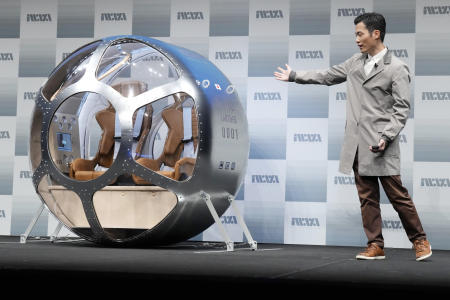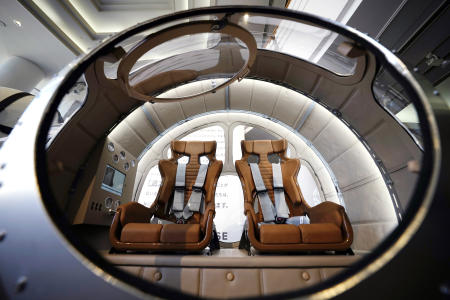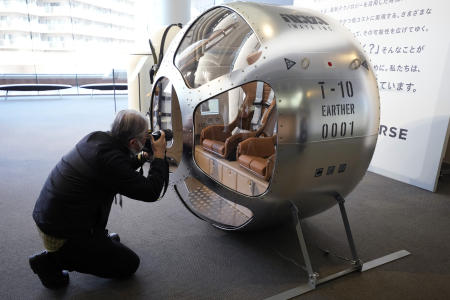





TOKYO: A Japanese startup company announced plans Tuesday to launch a commercial space viewing balloon flight that it hopes will bring down to earth an otherwise astronomically expensive experience.
Company president Keisuke Iwaya told reporters that passengers do not have to be billionaires, go through intense training or have the language skills needed to fly in a rocket.
“It’s safe, economical and gentle for people,” Iwaya said. “The idea is to make space tourism for everyone.” He said he wants to “democratize the space.”
Iwaya Giken, based in Hokkaido capital Sapporo in northern Japan, has been working on the project since 2012 and says it has since developed a two-seater cabin and a balloon capable of rising up to the altitude of 25 kilometers (15 miles), where the curve of the Earth can be clearly viewed. While passengers won’t be in outer space — the balloon only goes up to roughly the middle of the stratosphere — they’ll be higher than a jet plane flies and have an unobstructed view of outer space.
The company teamed up with major Japanese travel agency JTB Corp., which announced plans to collaborate on the project when the company is ready for a commercial trip. Initially, a flight would cost some 24 million yen ($180,000), but Iwaya said he aims to eventually bring it down to several million yen (tens of thousands of dollars).
While Japanese space ventures have fallen behind US companies like SpaceX, Iwaya said his aim is to make space more reachable.
SpaceX launched three rich businessmen and their astronaut escort to the International Space Station in April for $55 million each — the company’s first private charter flight to the orbiting lab after two years of carrying astronauts there for NASA.
But unlike a rocket or a hot air balloon, the Iwaya Giken vessel will be lifted by helium that can be largely reused, company officials said, and flights will safely stay above the Japanese territory or airspace. The first trip is planned as early as later this year.
An airtight, two-seater cabin that can carry a pilot and a passenger would take off from a balloon port in Hokkaido, rise for two hours to as high as 25 kilometers (15.5 miles) — part of the stratosphere and the gateway to space, whose definition varies but considered to start around 100 kilometers above the Earth — and stay there for one hour before a one-hour descent. The drum-shaped plastic cabin is 1.5 meters (4.9 feet) in diameter and has several large windows to allow passengers to see the space above or the blue Earth below, the company said.
Applications for a space viewing ride opened Tuesday through the end of August. The first five passengers selected will be announced in October, company officials said, and flights will be approximately a week apart, depending on the weather.
AP